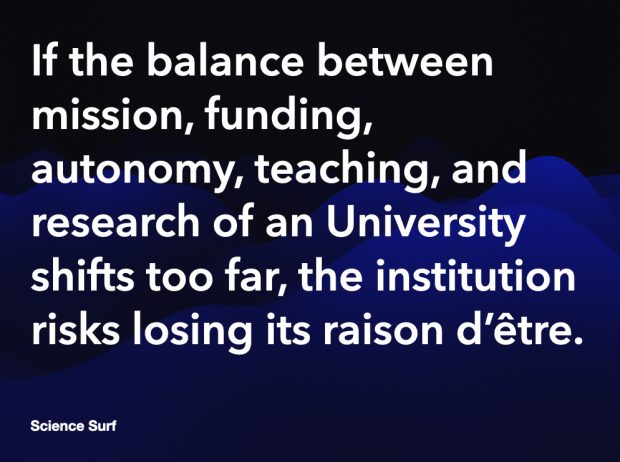There are several interesting papers on this topic during the last few weeks. The most interesting one was “How universities came to be – and why they’re in trouble now” by Philip G. Altbach. Higher education worldwide is under strain, facing deep financial and political challenges. In the U.S., universities are dealing with major federal funding cuts and political pressure on teaching and research. In the U.K. money troubles are pushing some institutions toward collapse. Global enrolment has exploded from 6 million in 1950 to 264 million in 2023, and by 2024 most countries—except in sub-Saharan Africa—were sending over half of school-leavers to higher education. So we don’t have anymore an elite university but education for the masses.
As higher education became accessible to the masses across the world, research-intensive universities based on the original Humboldtian model have come to represent just a small proportion of all higher education institutions.[…] the rise of populist politics has compounded some of these pressures. Populism has many causes —Rejection of experts, science and evidence-based policy is part of many populist movements.
Therefore we have now less highly qualified scientists at universities who will even move to the private sector. Clara Collier at her blog analyses the historical development.
… something happened to German universities at the turn of the 19th century — they developed a new system that combined teaching with research. Within a few decades, everyone in Europe was trying to copy their model. German scientists dominated chemistry and revolutionized modern physics. They came up with cell theory, bacteriology, the whole laboratory-based model of scientific medicine
The historical origins illuminate why modern universities may be in trouble: if the delicate balance between funding, mission, autonomy, teaching, and research shifts too far, the institution risks losing its raison d’être. All the financial and structural pressures that force now institutions to prioritise revenue, prestige, cost-cutting and global competition rather than education. In addition we have a legitimacy crisis, where universities are no longer seen as the unique centres of knowledge creation and public good – they compete instead with other knowledge platforms and feel more like businesses.
While the above analysis suggested that universities will decline when they lose their grounding in mission, and unity of purpose, a NYT article two months ago suggested that decline already happens by finances and market pressures that force institutions to compromise on programmes, services, and expectations undermining their offer to students that doesn’t stress anymore “ideas” as much as “money & market”.
– Rising administrative and support costs, which have soared in recent decades, even as state legislatures have tightened public spigots.– Higher tuition prices, among other considerations, which have turned off students, who are routinely paying more and oftentimes getting less.– Some academic programs that draw few students.
In the same vein is another Atlantic article on the disruption of the federal research-funding ecosystem (especially via the NIH) which ties into the broader theme of financial/mission distress.
Now many university professors and researchers believe that this special fusion of research and teaching is at risk. “I feel lost,” a research scientist at a top-five university who works on climate and data science told me.
It complements the notion that universities are vulnerable not only to enrolment/tuition pressures and mission drift, but also to external shocks in the research funding system. Many research universities have built major commitments around securing federal research grants and the indirect cost (“overhead”) payments from them. The Atlantic piece argues that when those are threatened, the whole institution becomes fragile.
That ties back to the origin‐story of the modern research university (the teaching + research model) — if the “research” side now collapses, the model itself is under threat. This injects more urgency: it’s not only decades of mission drift and funding pressure, but also sudden regulatory/policy upheavals.
